 In my last two posts – “Fully Baking Joint IP Ownership into Collaboration Agreements” and “The Default Law of Joint IP Ownership” – I discussed the prevalence and dangers of joint intellectual property (IP) ownership clauses in certain inter-company agreements. More specifically, I warned about the dangers of automatically assuming that newly-created (or “foreground”) IP should be equally and jointly owned by the parties to various collaboration-type agreements such as Joint Research Agreements, Technology Cooperation Agreements, Joint Development Agreements, Sponsored Research Agreements, Co-Development Agreements, Supply Agreements, Services Agreements, etc. Further, using patent filing statistics as a proxy for R&D activity, I demonstrated that the default laws of joint IP ownership across seven of the world’s top patent filing jurisdictions were widely varied, and counseled IP law practitioners not to neglect addressing the all-too-often forgotten consequences and mechanics of joint IP ownership while drafting, negotiating and reviewing such collaboration agreements.
In my last two posts – “Fully Baking Joint IP Ownership into Collaboration Agreements” and “The Default Law of Joint IP Ownership” – I discussed the prevalence and dangers of joint intellectual property (IP) ownership clauses in certain inter-company agreements. More specifically, I warned about the dangers of automatically assuming that newly-created (or “foreground”) IP should be equally and jointly owned by the parties to various collaboration-type agreements such as Joint Research Agreements, Technology Cooperation Agreements, Joint Development Agreements, Sponsored Research Agreements, Co-Development Agreements, Supply Agreements, Services Agreements, etc. Further, using patent filing statistics as a proxy for R&D activity, I demonstrated that the default laws of joint IP ownership across seven of the world’s top patent filing jurisdictions were widely varied, and counseled IP law practitioners not to neglect addressing the all-too-often forgotten consequences and mechanics of joint IP ownership while drafting, negotiating and reviewing such collaboration agreements.
Now, I present ten scenarios for dealing with what is usually the most contested issue in pre-collaboration agreement negotiations – the ownership of foreground IP. These scenarios range from preferably avoiding joint IP ownership altogether to more complex situations involving joint IP ownership with both nonexclusive and exclusives licenses, as well as nonexclusive and exclusive cross-licenses, and even scenarios based on defining the parties’ respective fields of endeavor.
Thus, if you cannot “Avoid jointly owned IP like the plague,” because business and engineering clients, as well as corporate co-counsel, continue to insist on the “fairness” of joint IP ownership, the above-presented scenarios will serve to fill the quivers of IP law practitioners who continue to be called to draft, review and negotiate such collaboration-type agreements.

![[IPWatchdog Logo]](https://ipwatchdog.com/wp-content/themes/IPWatchdog%20-%202023/assets/images/temp/logo-small@2x.png)

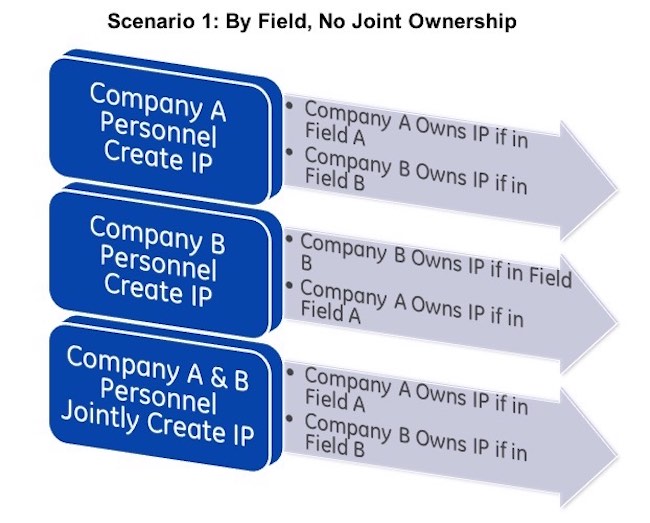
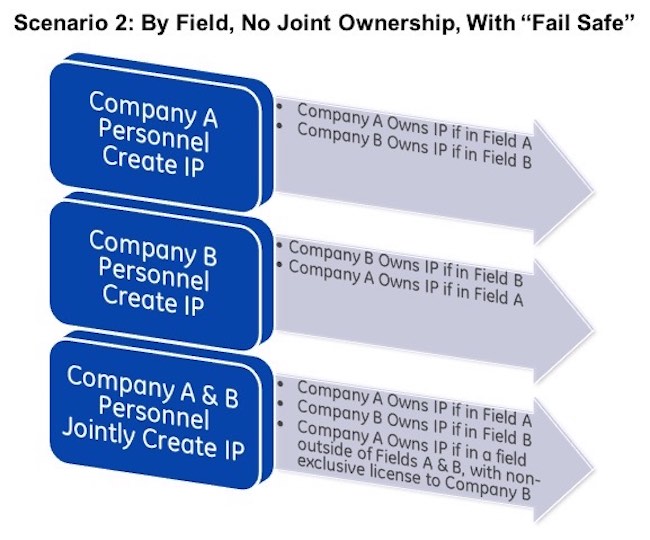
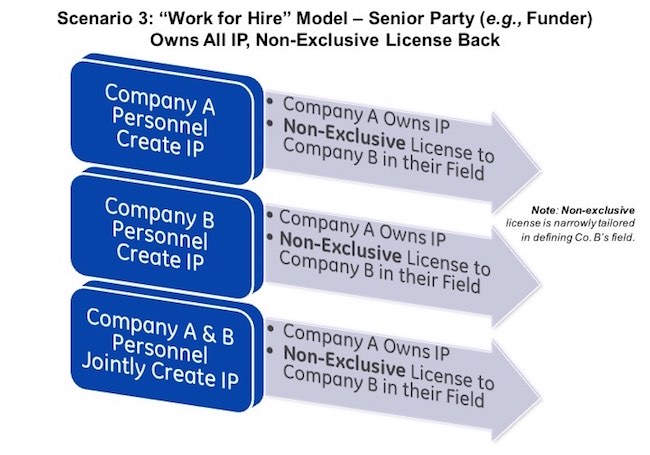
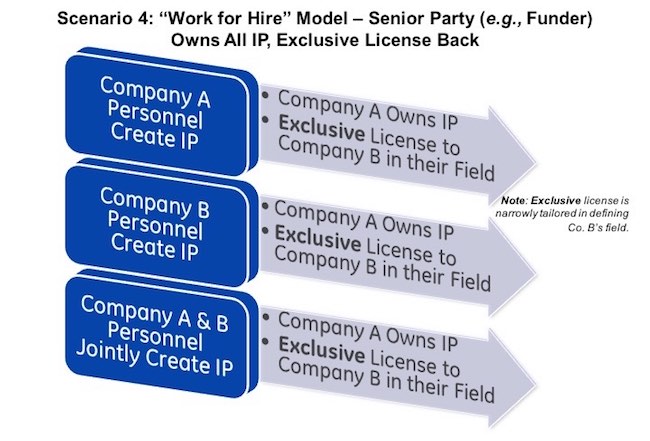
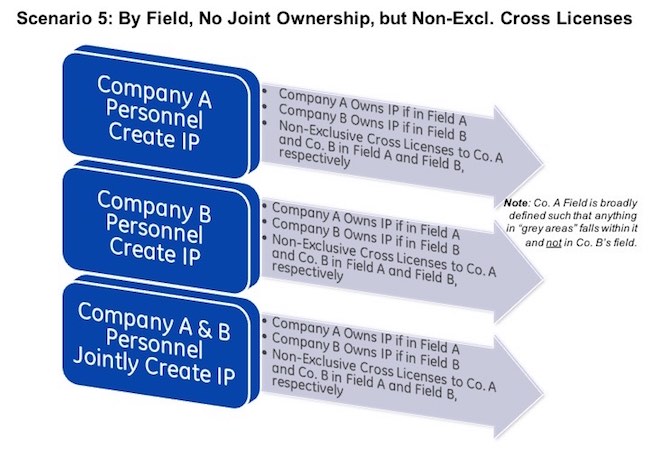
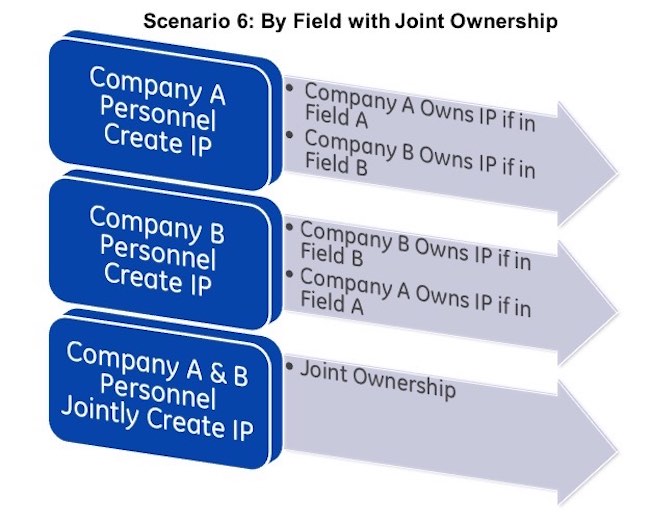
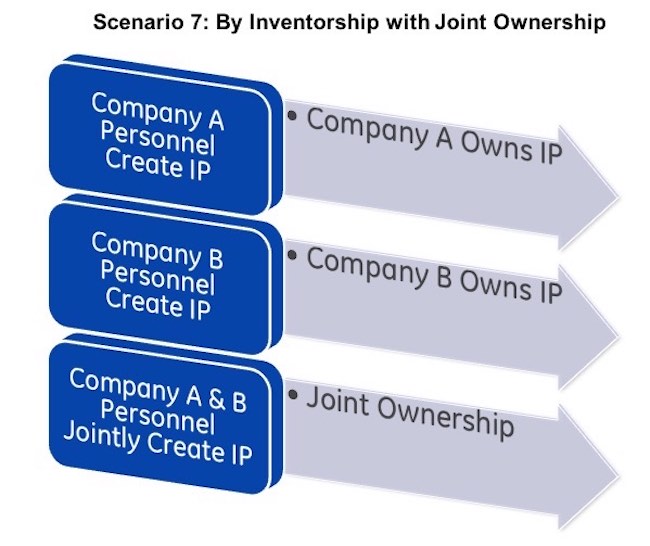
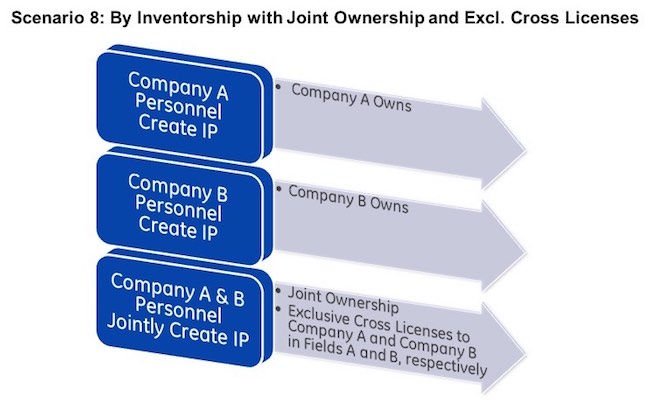
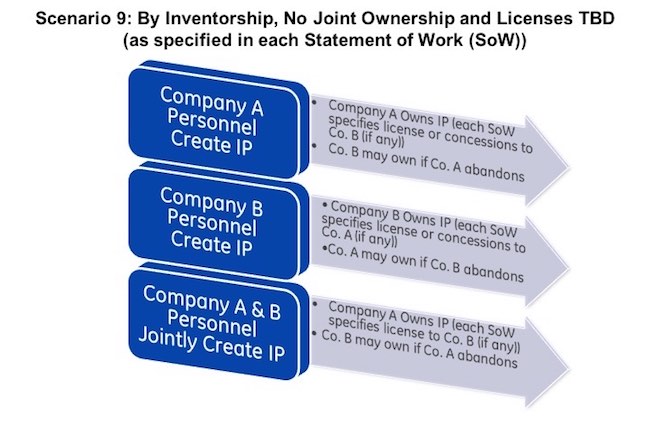
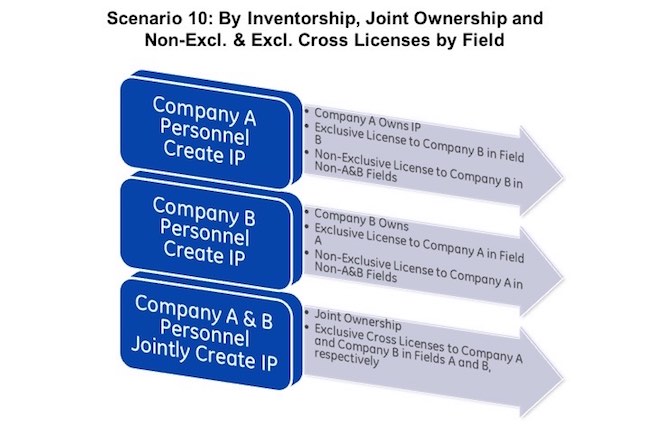
![[Advertisement]](https://ipwatchdog.com/wp-content/uploads/2024/04/Artificial-Intelligence-2024-REPLAY-sidebar-700x500-corrected.jpg)
![[Advertisement]](https://ipwatchdog.com/wp-content/uploads/2024/04/Patent-Litigation-Masters-2024-sidebar-700x500-1.jpg)

![[Advertisement]](https://ipwatchdog.com/wp-content/uploads/2021/12/WEBINAR-336-x-280-px.png)
![[Advertisement]](https://ipwatchdog.com/wp-content/uploads/2021/12/2021-Patent-Practice-on-Demand-recorded-Feb-2021-336-x-280.jpg)
![[Advertisement]](https://ipwatchdog.com/wp-content/uploads/2021/12/Ad-4-The-Invent-Patent-System™.png)






Join the Discussion
2 comments so far.
Paul F. Morgan
April 14, 2016 02:59 pmRe: “..if you cannot “Avoid jointly owned IP like the plague,” because business and engineering clients, as well as corporate co-counsel, continue to insist on the “fairness” of joint IP ownership”
This hits this serious problem on the head. But I would rather like see more attempts to educate clients as to just how much of a legal disaster joint ownership of patent rights is in the U.S. E.g., “Joint Ownership” of Inventions, Patents or Copyrights – A Legal mess to Avoid” December 1997 AUTM Newsletter [The Association of University Technology Managers.]
It can also be a malpractice hazard for the patent attorneys prosecuting patent applications for two different clients.
xtian
April 11, 2016 11:04 amRaymond,
Thanks for the article. This needs to be seen by all “contracts counsels” not just IP counsel!